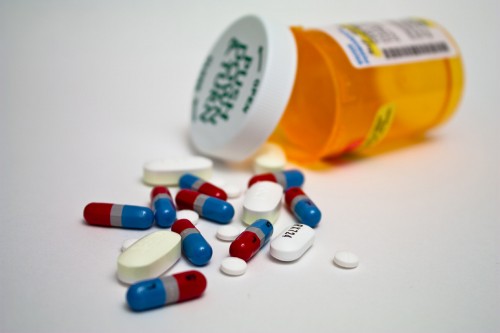Article submitted by Sasha Bakhru.
Generic drugs are laboratory-tested to ensure the same amount of drug will be absorbed into the bloodstream. The active ingredients in generic drugs are in fact made and produced the same as the brand name products.
So who makes generic drugs?
Well Drugs are originally marketed as their brand name or by it first inventor and there for has a patent which can last up to Twenty Years but when the patent
Expires that’s when other companies can start creating generic drugs .It is estimated 50 percent of generic drugs are now in production. The only difference may be the shape color and of course the prices.
American Medical Association endorses generic drugs:
It is the largest organization of medical doctors whom endorses generic drugs as acceptable for American public use. Most hospitals routinely use generic drugs in the treatment of their patients. The Food and Drug Administration also known as the F.D.A enforces generic drugs standards through legislation. Let’s look at some facts on generic drugs from the Food and Drug Administration.
Generic drugs are held to the same federal Food and Drug Administration standards for safety and performance as the brand names yet sell for 25 to 75 percent less.
To be FDA approved, generic drugs must deliver the same amount of active ingredients in the same time as the brand name.
FDA requires generic drugs to have the same quality, strength, purity and stability as name brands.
The United States Congress Budget Office says generic drugs save consumers an estimated $8 billion to $10 billion annually at retail pharmacies. Billions more are saved when hospitals use generic drugs.
Companies spend billions targeting consumers which mean you often spend more money on prescription drugs. Generic drugs or the off brand can cut your costs.
Advertisements for drugs are as common as auto and toy ads? But you may have noticed no ads for generic drugs. The real fact is that pharmaceutical companies spent about $2.5 billion in 2001 on direct-to-consumer advertising. direct-to-consumer drug ads are designed to sell expensive brand-name drugs.
Why are drugs so expensive?
The Food and Drug Administration relaxed restrictions in 1997 on what drug companies could say in broadcast and print ads which lead to the present flood.
The United States and New Zealand permit advertising of prescription medicines to consumers.
No wonder with escalating costs affect your pocketbook generic drugs are growing in popularity. Since 1993, the U.S. Food and Drug Administration (FDA) have approved 232 new drugs, with 52 entering the market between 1999 and the first half of 2000. Some of these new drugs, such as Betaseron for multiple sclerosis and Celebrex and Vioxx for arthritis, can cost between $70 and $1,000 per month. Enbrel, created to treat rheumatoid arthritis, costs $12,000 a year. Sticker shock for those of us who still think prescriptions cost about $25 a month. Someone pays the price for these prescription drugs.
Will my doctor prescribe generic drugs?
It depends on the doctor. You can ask your doctor to write a prescription permitting substitution and use generic drugs instead of the name brand. You also can ask whether a generic product will be as effective and less costly. Or, you can request that only brand-name products be used to fill your prescriptions.
Are there reasons to stick with a brand-name drug even if there are generic drugs that can do the same?
There can be reasons why generic drugs may not be right for you. Remember, the FDA regulates the equivalency of active ingredients in generic drugs. But there are also tiny amounts of inactive ingredients, components of the drug that give it bulk or help it conform to a desired shape or color. For certain people these inactive ingredients may not always be inert, meaning they may have an unanticipated effect. For more information regarding generic drugs contact
The Food and Drug Administration.
